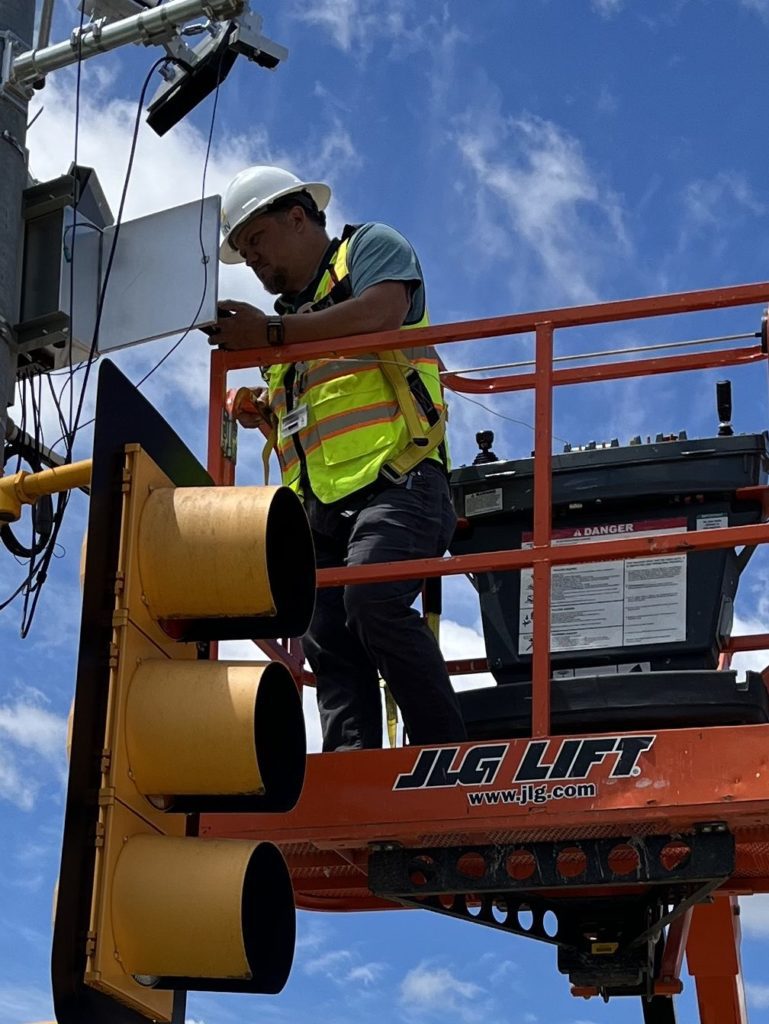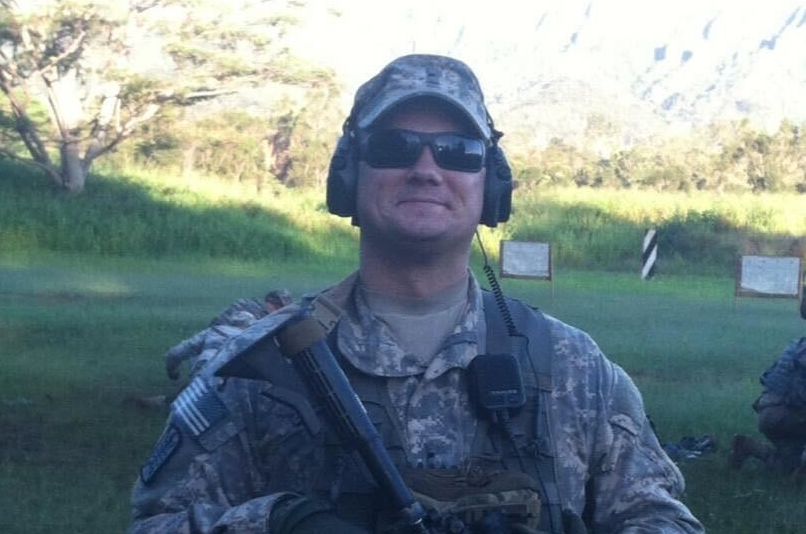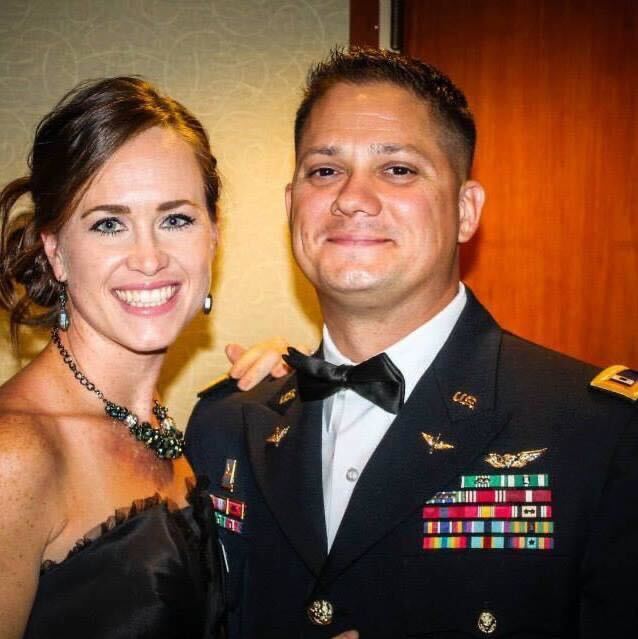Military service gave veteran skills he needed to land civilian work at Mcity that continues to fuel his sense of purpose

The motto of the U.S. Marine Corps is Semper Fidelis – “always faithful.”
In the Coast Guard, it’s Semper Paratus – “always ready.”
Mcity’s Jim Lollar has served in both branches, as well as the U.S. Army, and if he had his own motto it could be Semper Occupatus – “always busy.”
As the manager of test facilities for Mcity at the University of Michigan, Jim, 44, spends much of his day puzzling over the intricacies of implementing the complex, highly technical details of sophisticated closed-loop autonomous vehicle testing conducted at Mcity.
At other times, he’s taking out the trash.

“Today, I started with discussing options with a team from the College of Engineering for vehicle retrofit kits so they could conduct high-accuracy testing that can run a repeatable, precision route every time,” Jim said. “My next conversation was, ‘Did we order that dumpster?’ ”
Jim’s work turns the lofty, abstract concepts behind advanced autonomous vehicle technology into the concrete tests that are making the cars of tomorrow a reality today.
Jim started his military career with the Marines, moved to the Coast Guard and finished up as an Army warrant officer leading a drone unit. His skills range from firing a machine gun and administering advanced emergency medical treatment to piloting a rescue boat and flying the Army’s most advanced unmanned aircraft.
All that experience has given him the ability to ensure that the people, materials and technology needed to accomplish a mission are on hand, in place and ready to go.
“There’s the cerebral side of Mcity, the policy and the technology,” Jim said. “I’m the physical side of Mcity.”
After graduating from Saline High School in 1997, Jim joined the Marines, heading to boot camp while his girlfriend, Heather, headed to college. When he was posted to Hawaii she visited but shied away from the idea of becoming a Marine spouse. “She got a taste of the lifestyle and was like, ‘No way.’ ”
Rather than re-enlist, Jim returned to Michigan, entering the fire academy to follow in the footsteps of his grandfather, a Detroit firefighter. He also joined the Marine reserves. After the 9/11 attacks the threat of a deployment loomed again.
“One night, I saw a commercial showing the Coast Guard doing homeland security work, driving fast boats,” Jim said. “I wanted to go back on active duty and it was a compromise with my fiance to go into the Coast Guard.”

Jim hoped to work in aviation, but after training as an emergency medical technician, maritime law enforcement officer and rescue boat driver, he’d become so highly trained that the Coast Guard wouldn’t reassign him to search and rescue helicopters. Assigned to the Hurricane Katrina recovery efforts in New Orleans, Jim saw Army drones in action – and a way to finally move into aviation.
After his cousin was wounded in Iraq, Jim felt that he wasn’t doing enough in the Coast Guard. Then came the news that the service had new plans for him – a stint on the Mackinaw, a 240-foot Great Lakes icebreaker.
“Painting is what you do on a ship like that, “Jim said. “You paint the ship and you handle buoys.,” Jim said. “That was not what I was looking for out of life.”
A transfer into the Army got Jim out of icebreaker duty and into a drone unit, where he rose to become a warrant officer leading an eight-soldier unit flying unmanned aircraft over Iraq and supporting drone operations in Afghanistan.
“I got exactly what I wanted,” Jim said. “I wanted to fly drones. I came in and I got to fly drones.”
“The important thing is that Mcity is using technology for good. There were about 42,000 lives lost in traffic accidents last year. If we can just do a little bit to prevent those deaths, that would be amazing.”
Jim Lollar, Mcity Test Facilities Manager
Now retired from the armed services, Jim is making the transition to civilian life in Ann Arbor with Heather, now his wife of 20 years, along with his three daughters in first, fourth and ninth grade, and his loyal French bulldog. He arrived at Mcity in December eager to apply the expertise in logistics, communications and coordinating people and technology he gained during 20 years in the military for something other than warfare.

“That’s difficult on the soul,” Jim said. “The important thing is that Mcity is using technology for good. There were about 42,000 lives lost in traffic accidents last year. If we can just do a little bit to prevent those deaths, that would be amazing.”
A big part of Jim’s Mcity work involves transforming research proposals into a checklist of the assets and technology that will be required, as well as the individual steps needed to create a procedure that can accurately generate the testing data researchers can use to make autonomous vehicles safe.
“I make sure that the gates open, that lights work, all that stuff,” Jim said. “But I also make sure that the systems that bring it all together are in place, talking to the network administrator and the software developers about what improvements we can make for users.”
The switch from unmanned aerial vehicles to working with unmanned ground vehicles means Jim can not only leverage his technical expertise but also use the organizational skills he gained in the service.
“The reason the U.S. Army is so good at what it does is because we take logistics very seriously,” Jim said. “After a big training event the question isn’t, ‘Did you win?’ it’s, ‘Did you run out of water? Did you run out of supplies? Did you run out of food?’ It’s an all-encompassing job where it’s a mix of people and technology working to exploit the technology as much as you can for the good of the mission.”
Jim’s mission at Mcity is to transition the facility to its next phase as a highly automated testing ground by adding proxies for real-world elements, including humanistic pedestrian robotics that can challenge the highly automated vehicles to correctly identify and respond to situations where people are crossing the street or strolling down the sidewalk.
“That’s so we can test these autonomous vehicles without having any individual being in harm’s way,” Jim explained. “We can send the vehicle into the facility, close the gate, and you’ll have people crossing the sidewalk, you’ll have vehicles backing out of driveways and you’ll have shopping carts blowing across the parking lot.”
“Every day that you’re in the military, you know what your purpose is. You’ve never worked a day in your life just for a paycheck. I’ve only been at Mcity for six months but so far my biggest success is that I feel like I’m on a team. I feel needed, I feel that the work is important and that the other people on the team really care. It’s not just another day at work.”
Jim Lollar
The goal is to collect more data that can gauge the ability of an autonomous vehicle to respond to the types of potentially dangerous driving situations that human drivers instinctively avoid.
“It’s just leveraging technology to get a job done,” Jim said. “ The academic institutions and the industry have to do their due diligence so that we can have safe, connected highly automated vehicles, that’ll share the roadways with my three kids.”
One of the biggest obstacles facing military men and women entering civilian life is losing the sense of mission that comes with being in the armed forces, a sense that now comes from his work at Mcity.
“Every day that you’re in the military, you know what your purpose is,” Jim said. “You’ve never worked a day in your life just for a paycheck,” Jim said. “I’ve only been at Mcity for six months but so far my biggest success is that I feel like I’m on a team. I feel needed, I feel that the work is important and that the other people on the team really care. It’s not just another day at work.”